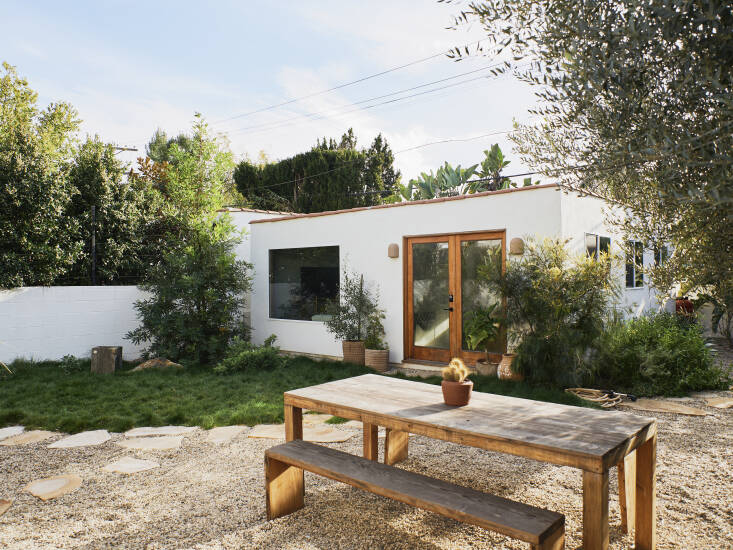.elementor-widget-text-editor.elementor-drop-cap-view-stacked .elementor-drop-capbackground-color:#69727d;color:#fff.elementor-widget-text-editor.elementor-drop-cap-view-framed .elementor-drop-capcolor:#69727d;border:3px solid;background-color:transparent.elementor-widget-text-editor:not(.elementor-drop-cap-view-default) .elementor-drop-capmargin-top:8px.elementor-widget-text-editor:not(.elementor-drop-cap-view-default) .elementor-drop-cap-letterwidth:1em;height:1em.elementor-widget-text-editor .elementor-drop-capfloat:left;text-align:center;line-height:1;font-size:50px.elementor-widget-text-editor .elementor-drop-cap-letterdisplay:inline-block
Mums (Chrysanthemums) are part of the fall landscape in our area, often grouped together to create sweeping swaths of stunning color. Father of modern taxonomy, Carolus Linnaeus, named the flower from the Greek word “Chrys” meaning “golden” (the color of the original flowers) and “anthemon” meaning “flower.” Originally grown in the Eurasian region, the Chrysanthemum was introduced to Japan by Buddhist monks around 400 AD. Japanese emperors were so enamored with the flower (called “Kiku” in Japan) that they sat upon thrones of Chrysanthemums.
A member of the Asteraceae (Compositae) family, one of the largest families of flowering plants with over 1,000 genera and 20,000 species, Chrysanthemums are second only to roses in worldwide popularity. Each Chrysanthemum flower head is actually a cluster of multiple flowers, composed of a central group of short disk flowers surrounded by rings of longer ray flowers, and are classified into nine categories based on the arrangement of the disk and ray flowers: Incurved; Reflexed; Intermediate; Late Flowering Anemones; Singles; Pompons; Sprays; Spiders/Spoons/Quills; and Charms & Cascades.
Although we typically associate Chrysanthemums as a fall annual plant, they are actually perennials when planted in the spring and their roots are allowed to develop. When planted in spring, mums will begin blooming in late summer and continue into fall. An added bonus of planting mums in the garden; they contain a substance called pyrethrum, which is a natural insect repellent. Planting mums along the perimeter of a vegetable garden is a beautiful way to protect it from pests.
Chrysanthemums also make great container plants and weekly fertilizing will keep their bloom period going. If planted in the landscape, divide mums every three years to keep them healthy and encourage blooming. To divide them, dig up the plant early in the spring and divide its root system into three or four separate sections and replant each one.
Mums will be happiest in moist, well-drained soil with full sun (at least six hours a day) for maximum flowering. Be sure to give them enough room when planting since they reach a diameter of three feet at maturity.
Our friends at Proven Winners have some varieties of mums we love, including:
- Sparkle White Garden Mum – A daisy-like annual with a full, lush flower head.
- Fireglow Bronze Garden Mum – Outstanding flower size and prolific flowering, blooms glow from deep orange to sunset yellow as they open.
- Hilo
 Fuchsia Pot Mum – A Gerbera Daisy like look, with a bright yellow center that “halos” onto vivid pink petals.
Fuchsia Pot Mum – A Gerbera Daisy like look, with a bright yellow center that “halos” onto vivid pink petals. - Key Lime Garden Mum – Vibrant chartreuse color with small-to-medium size blooms and tremendous flower count. Perfect for fall decorating.
Need to amp up the fall color volume of your landscape? Contact us or call us at Farmside Landscape & Design today!
.elementor-gallery__containermin-height:1px.elementor-gallery-itemposition:relative;overflow:hidden;display:block;text-decoration:none;border:solid var(–image-border-width) var(–image-border-color);border-radius:var(–image-border-radius).elementor-gallery-item__content,.elementor-gallery-item__overlayheight:100%;width:100%;position:absolute;top:0;left:0.elementor-gallery-item__overlaymix-blend-mode:var(–overlay-mix-blend-mode);transition-duration:var(–overlay-transition-duration);transition-property:mix-blend-mode,transform,opacity,background-color.elementor-gallery-item__image.e-gallery-imagetransition-duration:var(–image-transition-duration);transition-property:filter,transform.elementor-gallery-item__contentdisplay:flex;flex-direction:column;justify-content:var(–content-justify-content,center);align-items:center;text-align:var(–content-text-align);padding:var(–content-padding).elementor-gallery-item__content>divtransition-duration:var(–content-transition-duration).elementor-gallery-item__content.elementor-gallery–sequenced-animation>div:nth-child(2)transition-delay:calc(var(–content-transition-delay) / 3).elementor-gallery-item__content.elementor-gallery–sequenced-animation>div:nth-child(3)transition-delay:calc(var(–content-transition-delay) / 3 * 2).elementor-gallery-item__content.elementor-gallery–sequenced-animation>div:nth-child(4)transition-delay:calc(var(–content-transition-delay) / 3 * 3).elementor-gallery-item__descriptioncolor:var(–description-text-color,#fff);width:100%.elementor-gallery-item__titlecolor:var(–title-text-color,#fff);font-weight:700;width:100%.elementor-gallery__titles-containerdisplay:flex;flex-wrap:wrap;justify-content:var(–titles-container-justify-content,center);margin-bottom:20px.elementor-gallery__titles-container:not(.e–pointer-framed) .elementor-item:after,.elementor-gallery__titles-container:not(.e–pointer-framed) .elementor-item:beforebackground-color:var(–galleries-pointer-bg-color-hover).elementor-gallery__titles-container:not(.e–pointer-framed) .elementor-item.elementor-item-active:after,.elementor-gallery__titles-container:not(.e–pointer-framed) .elementor-item.elementor-item-active:beforebackground-color:var(–galleries-pointer-bg-color-active).elementor-gallery__titles-container.e–pointer-framed .elementor-item:beforeborder-color:var(–galleries-pointer-bg-color-hover);border-width:var(–galleries-pointer-border-width).elementor-gallery__titles-container.e–pointer-framed .elementor-item:afterborder-color:var(–galleries-pointer-bg-color-hover).elementor-gallery__titles-container.e–pointer-framed .elementor-item.elementor-item-active:after,.elementor-gallery__titles-container.e–pointer-framed .elementor-item.elementor-item-active:beforeborder-color:var(–galleries-pointer-bg-color-active).elementor-gallery__titles-container.e–pointer-framed.e–animation-draw .elementor-item:beforeborder-left-width:var(–galleries-pointer-border-width);border-bottom-width:var(–galleries-pointer-border-width);border-right-width:0;border-top-width:0.elementor-gallery__titles-container.e–pointer-framed.e–animation-draw .elementor-item:afterborder-left-width:0;border-bottom-width:0;border-right-width:var(–galleries-pointer-border-width);border-top-width:var(–galleries-pointer-border-width).elementor-gallery__titles-container.e–pointer-framed.e–animation-corners .elementor-item:beforeborder-left-width:var(–galleries-pointer-border-width);border-bottom-width:0;border-right-width:0;border-top-width:var(–galleries-pointer-border-width).elementor-gallery__titles-container.e–pointer-framed.e–animation-corners .elementor-item:afterborder-left-width:0;border-bottom-width:var(–galleries-pointer-border-width);border-right-width:var(–galleries-pointer-border-width);border-top-width:0.elementor-gallery__titles-container .e–pointer-double-line .elementor-item:after,.elementor-gallery__titles-container .e–pointer-double-line .elementor-item:before,.elementor-gallery__titles-container .e–pointer-overline .elementor-item:before,.elementor-gallery__titles-container .e–pointer-underline .elementor-item:afterheight:var(–galleries-pointer-border-width).elementor-gallery-title–space-between:10px;cursor:pointer;color:#6d7882;font-weight:500;position:relative;padding:7px 14px;transition:all .3s.elementor-gallery-title–activecolor:#495157.elementor-gallery-title:not(:last-child)margin-right:var(–space-between).elementor-gallery-item__title+.elementor-gallery-item__descriptionmargin-top:var(–description-margin-top).e-gallery-item.elementor-gallery-itemtransition-property:all.e-gallery-item.elementor-animated-content .elementor-animated-item–enter-from-bottom,.e-gallery-item.elementor-animated-content .elementor-animated-item–enter-from-left,.e-gallery-item.elementor-animated-content .elementor-animated-item–enter-from-right,.e-gallery-item.elementor-animated-content .elementor-animated-item–enter-from-top,.e-gallery-item:focus .elementor-gallery__item-overlay-bg,.e-gallery-item:focus .elementor-gallery__item-overlay-content,.e-gallery-item:focus .elementor-gallery__item-overlay-content__description,.e-gallery-item:focus .elementor-gallery__item-overlay-content__title,.e-gallery-item:hover .elementor-gallery__item-overlay-bg,.e-gallery-item:hover .elementor-gallery__item-overlay-content,.e-gallery-item:hover .elementor-gallery__item-overlay-content__description,.e-gallery-item:hover .elementor-gallery__item-overlay-content__titleopacity:1a.elementor-item.elementor-gallery-titlecolor:var(–galleries-title-color-normal)a.elementor-item.elementor-gallery-title.elementor-item-active,a.elementor-item.elementor-gallery-title.highlighted,a.elementor-item.elementor-gallery-title:focus,a.elementor-item.elementor-gallery-title:hovercolor:var(–galleries-title-color-hover)a.elementor-item.elementor-gallery-title.elementor-item-activecolor:var(–gallery-title-color-active).e-con-inner>.elementor-widget-gallery,.e-con>.elementor-widget-gallerywidth:var(–container-widget-width);–flex-grow:var(–container-widget-flex-grow)
The post Great Plants for Fall Color – Mums (Chrysanthemum) appeared first on Farmside Landscape & Design.





